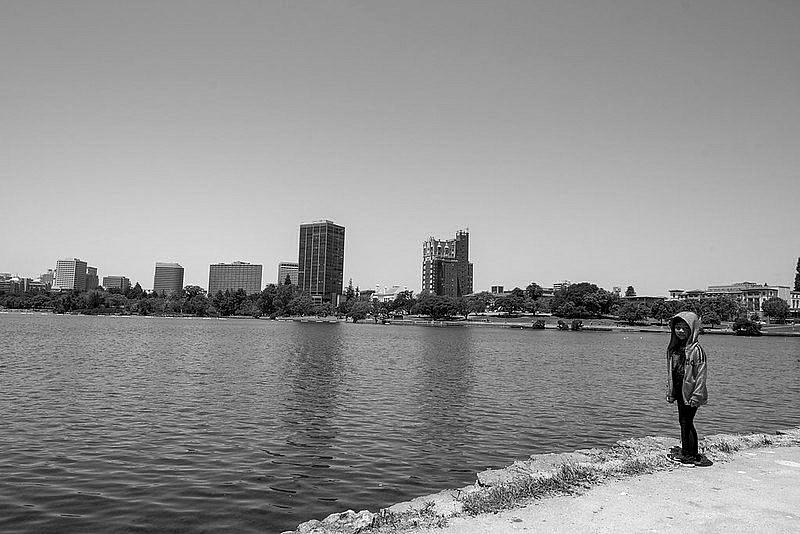Asthma, air pollution and COVID-19 are making it hard for Oakland’s kids to breathe

(Photo by Daniel Arauz via Flickr/Creative Commons)
2020 has been an exceptionally difficult year for everyone, but for Oakland families with children who suffer from respiratory health challenges, the number of risk factors has been overwhelming. Even before the COVID-19 pandemic caused us to shelter inside and wildfire smoke blanketed the skies, children living in East and West Oakland had a hard time breathing.
Communities in East and West Oakland have high rates of preterm birth (which impacts child lung development), childhood asthma, and now COVID-19 infections, as well as some of the highest levels of air pollution in California, exposing the children who live there – primarily children of color – to contaminants that exacerbate chronic lung conditions. At the same time, access to care for children living in Oakland with these conditions has diminished.
Early research into the impacts of air pollution on COVID-19 shows that exposure to even a small amount of particulate matter elevates COVID-19 mortality risk significantly among adults. The impacts of air pollution and COVID-19 on child health are unknown for now, but my prediction is that if it’s this bad for adults, it can’t be good for children. Particularly since climate change compounds existing air pollution challenges and wildfires on the West Coast release even more lung-irritating, ultrafine particulate matter into the air. These forces make it even harder for children with asthma or other respiratory conditions to breathe. Research spanning 25 years shows that pediatric asthma hospitalizations increase during these wildfire events.
But what happens after a child in respiratory distress gets to the hospital? Despite the urgent need for pediatric pulmonologists, there is a nationwide shortage of physicians working in this subspecialty. In California alone, there is a ratio of 1.3 pediatric pulmonologists per 75,500 children, according to data from the American Academy of Pediatrics. My early reporting shows that this deficit in care is felt acutely among East Bay children after a group of mid-career pulmonologists left Oakland’s safety net pediatric hospital. Uninsured or underinsured children face even greater barriers to accessing the care of specialists when there is a shortage of these providers. The pandemic has also limited children’s access to schools, hospitals, and other clean-air safe havens and points for health intervention.
Why this story?
When I started researching this story, I was overwhelmed by the number of known risk factors hat bombard the lungs and airways of children living in Oakland. The simple act of taking a deep breath, even through a cloth or N95 mask, has been entirely compromised. But the extent to which these various risk factors impact the lung health of Oakland kids at a population level and the individual level is still really murky. I am investigating how the confluence of health and environmental risk factors impact the lung health of children for the 2020 Data Fellowship in an effort to better account for how this complex health challenge impacts the lives of Oakland children and families.
The results of this project will be published in a series of articles for The Oaklandside, a community news outlet committed to reporting in service of our underserved communities.

